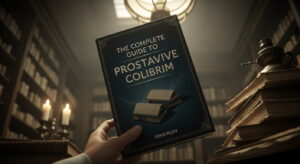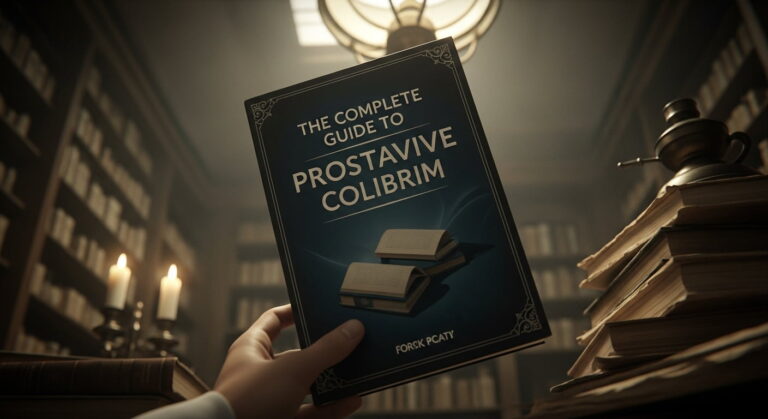Fragrances have a unique way of shaping our identity, evoking memories, and boosting confidence. Among the many types of fragrances available, Eau de Toilette stands out as a popular choice for millions worldwide.
But what exactly is Eau de Toilette, and why does it hold such a special place in the world of perfumery? In this comprehensive guide, we’ll dive into the details of Eau de Toilette, exploring its history, composition, uses, and why it’s a go-to option for fragrance lovers.
Whether you’re new to the world of scents or a seasoned enthusiast, this article will answer all your questions in a clear and engaging way.
What Is Eau de Toilette?
Eau de Toilette, often abbreviated as EDT, is a type of fragrance with a specific concentration of perfume oils diluted in alcohol and water. The term “Eau de Toilette” comes from French, loosely translating to “toilet water,” but don’t let the name fool you—it’s far from ordinary. This type of fragrance is lighter than some other options, making it perfect for everyday wear.
Typically, Eau de Toilette contains about 5-15% perfume oils, which gives it a refreshing and subtle scent that lasts for several hours. It’s not as intense as heavier fragrances like Eau de Parfum or Parfum, but its versatility makes it a favorite for many. Whether you’re heading to work, a casual outing, or a light evening event, Eau de Toilette strikes the perfect balance between noticeable and understated.
The History of Eau de Toilette
The story of Eau de Toilette dates back centuries, rooted in the evolution of perfumery. The term itself emerged in France during the 14th century, when scented waters were used for grooming and hygiene. These early concoctions were often infused with herbs, flowers, or spices to mask odors in a time when bathing wasn’t as common.
By the 18th century, Eau de Toilette became more refined. Perfumers in Europe, particularly in France, began crafting lighter fragrances for daily use. One famous example is Eau de Cologne, a citrus-based fragrance created by Johann Maria Farina in 1709, which shares similarities with modern Eau de Toilette. Over time, Eau de Toilette evolved into a distinct category, offering a lighter, more accessible alternative to concentrated perfumes.
Today, Eau de Toilette is a staple in the fragrance industry, with countless brands offering their own unique blends. Its enduring popularity lies in its ability to adapt to modern lifestyles, providing a fresh and approachable scent for all occasions.
How Eau de Toilette Differs from Other Fragrances
To truly understand Eau de Toilette, it’s helpful to compare it to other fragrance types. The main difference lies in the concentration of perfume oils, which affects both the strength and longevity of the scent. Here’s a breakdown of the most common fragrance categories:
- Parfum (Extrait de Parfum): The most concentrated form, with 20-30% perfume oils. It’s long-lasting (up to 8-12 hours) and often the most expensive.
- Eau de Parfum (EDP): Contains 15-20% perfume oils, offering a strong scent that lasts 6-8 hours. Ideal for evening wear or special occasions.
- Eau de Toilette (EDT): With 5-15% perfume oils, it’s lighter and lasts 4-6 hours. Perfect for daily use or warmer weather.
- Eau de Cologne (EDC): A lighter option with 2-5% perfume oils, lasting 2-3 hours. Often used for a quick refresh.
- Eau Fraîche: The lightest, with 1-3% perfume oils, offering a fleeting burst of freshness.
Eau de Toilette sits in the sweet spot for many fragrance users, offering a balance of affordability, versatility, and staying power. It’s strong enough to make an impression but subtle enough to avoid overwhelming those around you.
The Composition of Eau de Toilette
What makes Eau de Toilette so special is its carefully crafted composition. Perfumers design EDTs with a balance of top, middle, and base notes to create a harmonious scent profile. Here’s how these notes work together:
- Top Notes: These are the first scents you notice when you apply Eau de Toilette. They’re light and volatile, lasting for about 15-30 minutes. Common top notes include citrus (lemon, bergamot), herbs (lavender, mint), or light fruits (apple, pear).
- Middle Notes (Heart Notes): As the top notes fade, the middle notes emerge, forming the core of the fragrance. These last for 1-2 hours and often include floral (rose, jasmine), spicy (cinnamon, clove), or green (basil, sage) notes.
- Base Notes: These are the lingering scents that anchor the fragrance, lasting several hours. Common base notes include woody (sandalwood, cedar), musky, or amber-like scents.
The lower concentration of perfume oils in Eau de Toilette means the scent evolves more quickly than in heavier fragrances, giving it a fresh and dynamic quality. This makes it ideal for those who enjoy a scent that shifts subtly throughout the day.
Why Choose Eau de Toilette?
Eau de Toilette is a versatile choice for a wide range of people and situations. Here are some reasons why it’s so popular:
- Versatility: Its moderate strength makes it suitable for various settings, from the office to casual outings.
- Affordability: Compared to Parfum or Eau de Parfum, Eau de Toilette is often more budget-friendly, offering great value without compromising quality.
- Light and Fresh: The lighter concentration makes it ideal for warm weather or daytime use, as it feels less heavy on the skin.
- Wide Variety: From floral to woody, citrus to spicy, Eau de Toilette comes in countless scent profiles to suit any preference.
- Layering Potential: Many fragrance enthusiasts use Eau de Toilette as part of a layering routine, combining it with body lotions or other fragrances for a custom scent.
For example, a popular Eau de Toilette like Creed Aventus (for men) or Chanel Coco Mademoiselle (for women) offers a sophisticated yet approachable scent that works for both professional and social settings. These fragrances have become iconic for their ability to balance freshness and elegance.
How to Apply Eau de Toilette for Best Results
To get the most out of your Eau de Toilette, proper application is key. Here are some expert tips to maximize its longevity and impact:
- Apply to Pulse Points: Spray Eau de Toilette on areas like your wrists, neck, behind the ears, and inner elbows. These spots emit heat, which helps diffuse the fragrance.
- Don’t Rub: Rubbing your wrists together after applying can crush the scent molecules, reducing its longevity. Instead, let the fragrance dry naturally.
- Moisturize First: Apply an unscented moisturizer to your skin before spraying. Hydrated skin holds fragrance longer.
- Layer with Care: If using a matching body lotion or cream, apply it first to enhance the scent’s staying power.
- Spray from a Distance: Hold the bottle 6-8 inches from your skin for an even application, avoiding overpowering spots.
A typical 100ml bottle of Eau de Toilette can last for months with daily use, making it a practical choice for regular wear. Aim for 2-4 sprays, depending on the occasion, to strike the right balance.
Eau de Toilette for Men vs. Women
While many fragrances are marketed as “for men” or “for women,” Eau de Toilette is increasingly unisex. The distinction often comes down to scent profiles:
- Men’s Eau de Toilette: These often feature woody, spicy, or citrus notes, with popular choices like Dior Sauvage or Tom Ford Oud Wood. They aim for a bold yet refined vibe.
- Women’s Eau de Toilette: These lean toward floral, fruity, or powdery notes, such as Lancôme La Vie Est Belle or Jo Malone Peony & Blush Suede. They often feel softer and more delicate.
- Unisex Options: Many modern Eau de Toilettes, like Byredo’s Gypsy Water or Le Labo’s Santal 33, are designed to appeal to all genders, blending notes like amber, musk, and florals.
Ultimately, the best Eau de Toilette is one that resonates with your personal style, regardless of how it’s marketed. Experimenting with samples can help you find the perfect fit.
Eau de Toilette in Different Seasons
The lighter nature of Eau de Toilette makes it especially suited for certain seasons and climates. Here’s a quick guide:
- Spring: Floral and green notes, like rose or fresh grass, complement the season’s freshness. Try something like Chloé Eau de Toilette.
- Summer: Citrus and aquatic notes shine in warm weather, keeping you feeling refreshed. Gucci Bloom Acqua di Fiori is a great example.
- Fall: Warm, spicy notes like amber or cinnamon add coziness. Jo Malone’s English Pear & Freesia works well here.
- Winter: While Eau de Toilette is lighter, woody or musky options can still feel rich. Creed Bois du Portugal is a solid winter pick.
Because Eau de Toilette is less intense, it’s particularly popular in spring and summer, when heavy fragrances can feel overwhelming.
How Long Does Eau de Toilette Last?
One common question about Eau de Toilette is its staying power. On average, EDT lasts 4-6 hours on the skin, though this varies based on factors like:
- Skin Type: Oily skin tends to hold fragrances longer than dry skin.
- Environment: Heat and humidity can make the scent fade faster.
- Quality of Ingredients: Higher-quality Eau de Toilettes, like those from niche brands, may last longer despite the lower concentration.
To extend the life of your Eau de Toilette, consider carrying a travel-sized bottle for a midday touch-up. Alternatively, layering with a matching body product can help the scent linger.
Choosing the Right Eau de Toilette for You
With so many options, finding the perfect Eau de Toilette can feel daunting. Here are some tips to guide your selection:
- Test Before You Buy: Always try a fragrance on your skin, as body chemistry affects how a scent develops.
- Consider Your Lifestyle: If you’re active or live in a warm climate, opt for fresh, citrusy EDTs. For office settings, choose subtle, clean scents.
- Explore Niche Brands: Beyond mainstream options, brands like Diptyque, Amouage, or Maison Francis Kurkdjian offer unique Eau de Toilette blends.
- Check Reviews: Online reviews or fragrance communities can provide insights into a scent’s performance and appeal.
According to a 2023 survey by Statista, 68% of fragrance buyers prefer Eau de Toilette or Eau de Parfum for daily use, highlighting EDT’s widespread appeal.
Common Myths About Eau de Toilette
There are a few misconceptions about Eau de Toilette that deserve clarification:
- Myth 1: It’s Low Quality. Eau de Toilette isn’t “weaker” or inferior—it’s simply designed for a lighter, fresher experience.
- Myth 2: It’s Only for Casual Use. While EDT is versatile, many high-end options are sophisticated enough for formal occasions.
- Myth 3: It Doesn’t Last. With proper application and quality ingredients, Eau de Toilette can last several hours.
Understanding these truths can help you appreciate Eau de Toilette’s unique place in the fragrance world.
The Future of Eau de Toilette
As consumer preferences shift toward sustainable and personalized products, Eau de Toilette continues to evolve. Many brands are now focusing on eco-friendly packaging, natural ingredients, and customizable scent profiles. For example, companies like The Body Shop and Lush offer Eau de Toilette with ethically sourced ingredients, appealing to environmentally conscious buyers.
Additionally, the rise of niche perfumery has brought more creative and unconventional Eau de Toilette options to the market. These trends suggest that EDT will remain a beloved choice for years to come, adapting to modern tastes while staying true to its classic roots.
Conclusion
Eau de Toilette is more than just a fragrance—it’s a versatile, accessible, and timeless way to express yourself.
With its balanced concentration, rich history, and endless variety, it’s no wonder Eau de Toilette remains a favorite among fragrance lovers. Whether you’re drawn to its fresh and light nature or its ability to suit any occasion, EDT offers something for everyone.
By understanding its composition, application techniques, and how it fits into your lifestyle, you can confidently choose an Eau de Toilette that enhances your personal style. So, next time you’re shopping for a scent, consider reaching for an Eau de Toilette—it might just become your new signature fragrance.





















+ There are no comments
Add yours